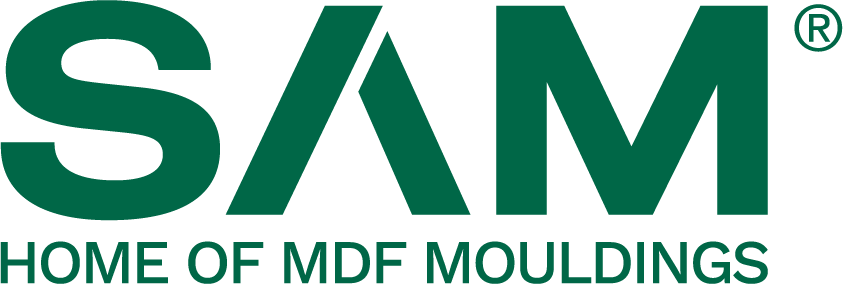HDF vs MDF wood products – what’s the difference?

HDF and MDF, also known as high-density fibreboard and medium-density fibreboard, are commonly used in interiors, but typically for very different purposes. When it comes to engineered wood products such as these, various options are available, and it can sometimes be difficult to tell the difference between HDF and MDF – and which might be the right material for a particular project. Let’s delve into this a little deeper.
How are HDF and MDF manufactured?
HDF and MDF are both manufactured using a combination of wood fibres and binders such as resin and wax.
Mark Kirkpatrick, technical director at SAM, notes that all SAM MDF mouldings are made using moisture resistant MDF, otherwise known as MR MDF. “This comprises a moisture-resistant resin that helps to ensure that the mouldings maintain their shape and appearance, even when used in high-humidity locations such as kitchens and bathrooms,” he explains.
The combined ingredients are then heated and compressed, with HDF being subjected to higher pressures than MDF. Both processes result in smooth and uniform panels with none of the inconsistencies that are common with natural timber, such as knots or woodgrain.
Mark adds: “The finished panels can then be cut and shaped as required, and the smooth surface is perfect for creating a high-quality finish. Depending on the product selected, HDF and MDF can be provided with a choice of finishes.” SAM finish options include:
- Painted –SAM Zero MDF mouldings have two coats of primer and an acrylic top coat.
- Wrapped –SAM Wrap mouldings can be covered in materials such as real wood veneer or PVC.
- Primed –SAM Mouldings are primed with two coats of primer.
Factory-applied finishes give a smooth and even sheen but, if required, unprimed products can also be provided.
What are the differences between HDF and MDF?
While HDF and MDF are manufactured in similar ways, there are some key differences to consider:
- Size of wood fibres: The wood fibres in MDF are larger, and therefore take up more volume than the wood fibres in HDF.
- Proportion of resin to fibre: HDF has a higher percentage of resin than MDF.
- Strength: HDF is stronger and more durable than MDF.
- Rigidity and stiffness: HDF is more rigid, while MDF provides some degree of flexibility.
- Weight: Both HDF and MDF are heavier than most natural woods, but MDF is lighter than HDF.
- Cost: HDF is more expensive than MDF.
Should I use MDF or HDF?
Since HDF is stronger and more durable than MDF, it’s easy to assume that it’s always the better choice. But other differences should also play a role in the decision-making process. For example, MDF is the better option for mouldings, due to its lighter weight, low cost and flexibility. Other common uses for each product include:
- HDF: Laminate flooring, cabinet doors, furniture components, decorative wall panels and signage.
- MDF: Shelving, cabinetry, furniture and decorative panelling.
If you’re trying to decide on HDF vs MDF mouldings, or have any other questions about specifying mouldings, please get in touch with a member of the SAM team. You can also request samples to see the quality of our MDF mouldings for yourself, or download our product catalogue to see our wide range of options.
For more than 35 years, SAM has been a trusted manufacturer of MDF mouldings for the construction and home improvement industries. With more than 250 different profiles to choose from, we offer styles and finishing options to suit any design aesthetic, and our large stock capacity ensures reliable availability. Our entire range is also backed by our friendly and professional support team.

